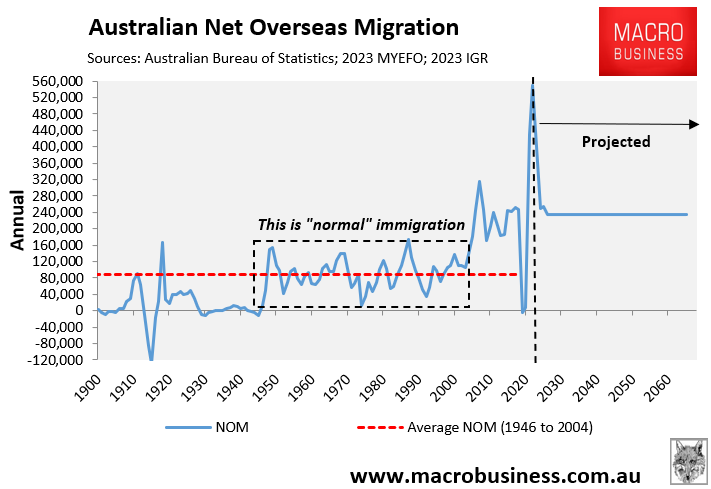On Wednesday, The SMH reported that the Albanese government had commissioned modelling of reforms to negative gearing and capital gains tax concessions.
The proposed changes are reportedly modest in scope, such as capping the number of properties a taxpayer could negatively gear.
Any reform would also be grandfathered so that existing investors were not impacted.
As expected, Housing Industry Association (HIA) chief economist Tim Reardon has lambasted the changes while also playing down the impact of excessive immigration.
“Increasing the tax on housing will result in less investment in housing, fewer houses being built and inevitably a worsening of the affordability challenge”, stated HIA’s Chief Economist, Tim Reardon.
“We cannot tax our way out of the housing affordability problem. The solution is less tax on housing and less government distortions on the market”.
“It is illogical to conclude that reducing opportunities to provide rental accommodation can make a meaningful impact on housing supply and rental affordability”.
“As was the case in each consideration of changes to tax settings in the past, it is government policies that remain the primary cause of the shortage in housing supply”.
“Governments continuing to blame migration, local investors and foreign investors for the housing crisis falls well short of the truth”, Reardon concluded.
As I noted yesterday, the overwhelming majority of investor purchases are for established dwellings:

Therefore, investors mostly turn homes for sale into homes for rent and do not impact the supply-demand balance in the rental market.
Labor’s proposed reforms are also very modest and would merely slightly moderate future investor demand by dissuading multiple investment property purchases.
Doing so would put modest downward pressure on prices and lift the homeownership rate marginally by shifting purchases toward first home buyers from investors.

Concerns surrounding the impacts on supply could be overcome by allowing full negative gearing for new builds, encouraging investors to purchase new homes rather than established homes.

The bigger issue is that since 2005, when immigration was ramped-up, Australia’s population has grown faster than housing construction:

Net overseas migration is projected to remain indefinitely high, which will grow Australia’s population by around 13 million people in only 39 years:

Such extreme population growth will conservatively require 6 million homes to be built (accounting for demolitions, second homes, etc).
The number one solution to Australia’s housing crisis is to run an immigration program below the nation’s capacity to build homes and infrastructure.
Curbing immigration would also lessen the need for future residents to live in high-rise shoeboxes.

